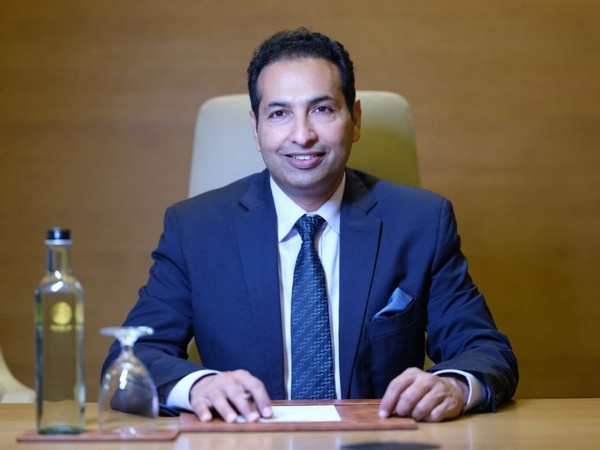 Lucknow: On a summer morning in Lucknow, the soundscape tells the story of a city forever in motion. The faint clip-clop of a lone tonga in the Old City echoes memories of an era when travel was leisure, when Nawabs rode through narrow lanes under canopies of grandeur. Yet, just a few kilometers away, sleek metro trains now glide past bustling stations, carrying thousands in minutes—efficiency where once there was elegance. This coexistence of the old and the new, of jingling bells and digital smart cards, perfectly captures the soul of Lucknow: a city that preserves its Nawabi tehzeeb while racing confidently into the future.
Lucknow: On a summer morning in Lucknow, the soundscape tells the story of a city forever in motion. The faint clip-clop of a lone tonga in the Old City echoes memories of an era when travel was leisure, when Nawabs rode through narrow lanes under canopies of grandeur. Yet, just a few kilometers away, sleek metro trains now glide past bustling stations, carrying thousands in minutes—efficiency where once there was elegance. This coexistence of the old and the new, of jingling bells and digital smart cards, perfectly captures the soul of Lucknow: a city that preserves its Nawabi tehzeeb while racing confidently into the future.
From tongas that defined its leisurely pace, to cycle rickshaws that adapted to colonial pragmatism, to the transformative arrival of the metro, Lucknow’s modes of commute are more than means of transport—they are cultural milestones. They chart a story of how the “City of Nawabs” grew into a modern metropolis without losing its grace, proving that the way a city moves often defines the way it lives.
The Nawabi Era: Tongas and the Art of Leisurely Travel
In the 18th and 19th centuries, under the patronage of the Nawabs of Awadh, Lucknow flourished as a center of art, literature, and culture. The Nawabs, renowned for their opulence and hospitality, shaped a city where every aspect of life—even transportation—was imbued with elegance.

Horse-drawn tongas and ekkas—light, two-wheeled carriages—were the primary modes of transport, embodying the leisurely pace of Nawabi life. These vehicles, adorned with intricate designs, embroidered upholstery, and cushioned seats, were not just practical; they were symbols of tehzeeb.
In the bustling markets of Chowk and Aminabad, tongas ferried everyone from aristocrats to traders. The rhythmic clatter of hooves, mingling with the jingle of brass bells, created a soundtrack that still lingers in the collective memory of Lucknow. The Nawabs’ investment in well-paved roads allowed commerce to flourish as Gujarati merchants, Kayastha scribes, and artisans converged in this cosmopolitan capital.
For the Nawabs, transport was performance as much as utility. Nawab Wajid Ali Shah, the last ruler of Awadh, famously paraded on elephants draped in zari-embroidered fabrics, turning movement into spectacle. While elephants symbolized power, tongas reflected grace. Drivers often engaged passengers with witty banter, embodying the “Pehle Aap” (you first) courtesy that still defines Lucknow’s ethos.
Yet, these systems could not withstand the pressures of modernization. By the mid-19th century, the city’s annexation by the British and a rapidly expanding population demanded swifter, more pragmatic modes of commute.
Colonial and Post-Independence Transitions: Cycles, Rickshaws, and Autos
After the 1857 Uprising and the decline of the Nawabi court, Lucknow underwent profound changes. The British left their imprint with infrastructure such as the majestic Charbagh Railway Station, which stitched Lucknow into India’s wider transport network.
While tongas endured, the early 20th century saw the rise of the cycle rickshaw—a vehicle that perfectly suited the city’s congested lanes. Rickshaw pullers, often migrants, became part of Lucknow’s urban rhythm, pedaling passengers through Hazratganj, where colonial architecture met traditional bazaars. They offered affordability and agility, blending old-world courtesy with new economic necessity.
Post-independence, as Lucknow’s population swelled with Sikhs, Sindhis, and Gujaratis migrating into the city, mobility needs intensified. By the 1960s and 70s, auto-rickshaws emerged as a faster alternative. Their iconic green-and-yellow frames zipped across Lucknow, reshaping daily commute patterns. By the 1980s, they dominated traffic in Alambagh, Charbagh, and Transport Nagar, becoming an inseparable part of the city’s identity.
But progress came with challenges. Autos were affordable, but they worsened traffic jams, increased air pollution, and raised safety concerns. Lucknow’s roads, still narrow and encroached in many areas, struggled to bear the burden. With a population that grew from 2.8 million in 2011 to over 3.5 million in 2025, congestion became a defining frustration. Over 1.5 lakh commuters crowded major routes daily, straining infrastructure and underscoring the need for transformative solutions.
The Advent of the Lucknow Metro: A Game-Changer for Smart Mobility
The solution arrived in 2017 with the inauguration of the Lucknow Metro, a watershed moment in the city’s history. Operated by the Uttar Pradesh Metro Rail Corporation (UPMRC), its debut priority corridor—a modest 8.5 km stretch from Transport Nagar to Charbagh—was completed ahead of schedule and under budget, signaling a new era of efficiency.
By 2019, the full 22.8 km North-South Corridor (Red Line) connected Chaudhary Charan Singh International Airport to Munshi Pulia, with 21 stations and trains arriving every 5–7 minutes.
The impact was swift and remarkable. On January 1, 2024, the metro recorded 1.3 lakh passengers in a single day, shattering previous ridership records. By 2025, its daily average stood at 87,000, with over 76 million passengers served since inception—13 times the city’s population.
The benefits were tangible:
- Cost Savings: Commuting by metro slashed costs by up to 70% compared to private vehicles.
- Time Efficiency: Trains cut commute times across major corridors drastically.
- Accessibility: Elevators, escalators, and ramps ensured inclusivity for the elderly and differently-abled.
The metro also honored Lucknow’s heritage. Station architecture subtly incorporated Nawabi motifs, ensuring that modernity did not erase tradition.
Looking ahead, the upcoming East-West Corridor (Blue Line), stretching from Vasant Kunj to Charbagh, promises to expand coverage into dense neighborhoods of the Old City, bridging commercial hubs, railway stations, and residential pockets. This expansion is expected to significantly boost ridership and deepen the city’s smart commute ecosystem.

E-Rickshaws: The Eco-Friendly Evolution of Rickshaws
In the 2010s, a quieter revolution rolled in: the e-rickshaw. By 2025, more than 20,000 e-rickshaws traverse Lucknow’s streets, from Gomti Nagar to the winding lanes of Chowk.
For commuters, they represent the perfect blend of affordability and accessibility: fares as low as ₹10–20 per ride, zero emissions, and easy last-mile connectivity to metro stations. For drivers, they offer independence with lower operating costs than autos.
Environmentally, their contribution is significant. With vehicular emissions responsible for nearly 40% of Lucknow’s particulate pollution (UP Pollution Control Board, 2023), e-rickshaws provide crucial relief. Government subsidies and charging stations—such as those at Alambagh Bus Stand—have encouraged adoption.
Still, challenges remain: unregulated parking clogs roads, and battery disposal poses ecological risks. Yet, their colorful exteriors, often painted with traditional motifs, make them a vibrant symbol of how Lucknow innovates without abandoning community spirit.
Paid Taxi Systems: Convenience in a Digital Age
The mid-2010s brought global tech into Lucknow’s streets with app-based cabs like Uber and Ola. By 2025, over 15,000 app taxis crisscross the city, catering to professionals, tourists, and families seeking comfort and reliability.
These systems integrated GPS tracking, digital payments, and ride-sharing options, aligning seamlessly with the Smart City mission. Their convenience—air-conditioned rides from Hazratganj to the airport at the tap of a phone—transformed commuting for the city’s rising middle class.
Culturally, too, they adapted. Many drivers maintain Lucknow’s hallmark politeness, often greeting riders with “Aap pehle batayein” (you tell me first). But challenges like surge pricing during peak hours and festivals occasionally strain affordability. In 2024, state policies introduced fare caps and welfare measures for drivers, stabilizing the sector and ensuring fairness.
Shared Mobility and Future Innovations
Lucknow is also embracing shared mobility solutions. By 2025, platforms like Rapido and Yulu offer:
- Bike Taxis: Over 5,000 riders ferry solo commuters swiftly through congested markets.
- Electric Scooters: Available for rent at ₹5–10 per km, they appeal to students and eco-conscious youth.
These micro-mobility options complement the metro, providing seamless last-mile links while reducing reliance on private vehicles. They align with sustainability goals under the Smart City Mission and reflect Lucknow’s youthful, experimental energy.
Smart Commute as a Cultural Cornerstone
What makes Lucknow unique is not just the adoption of modern transport, but the way it integrates tradition.
- The metro’s disciplined queues echo the politeness of the old “Pehle Aap” culture.
- E-rickshaws, painted with local art, bridge nostalgia and progress.
- Taxi drivers’ courtesy keeps tehzeeb alive in a digital age.
Together, these systems have reduced vehicular traffic by 30%, cut commuting costs, and created a more inclusive ecosystem where both students and nawabs of business class share the same infrastructure.
Challenges and the Road Ahead
Despite achievements, hurdles remain:
- Integration: Better feeder systems are needed to connect rickshaws and taxis with the metro.
- Congestion: Old City roads still choke under peak-hour traffic.
- Affordability: Surge pricing in taxis and limited night-time options deter consistent use.
Planned expansions offer hope. The East-West Corridor (2027) and a proposed high-speed rail (2029) will elevate connectivity. Smart traffic management, pedestrian pathways, and eco-friendly buses could complete the puzzle.
Preserving Heritage, Embracing Progress
Lucknow’s commute story is more than transport—it is culture in motion. From the elegant tongas of the Nawabs to today’s buzzing e-rickshaws and futuristic metro lines, every mode reflects the city’s ability to balance heritage with innovation.
As The Centrum hosts cultural festivals and metro stations integrate Nawabi design, Lucknow proves that modernization does not erase identity; it refines it. In every clattering hoofbeat remembered, and every metro chime heard today, lies the story of a city that knows how to move forward without forgetting where it came from.
Smart commute is no longer just infrastructure in Lucknow. It is tehzeeb on wheels, progress with grace—an enduring cornerstone of the city’s culture.





